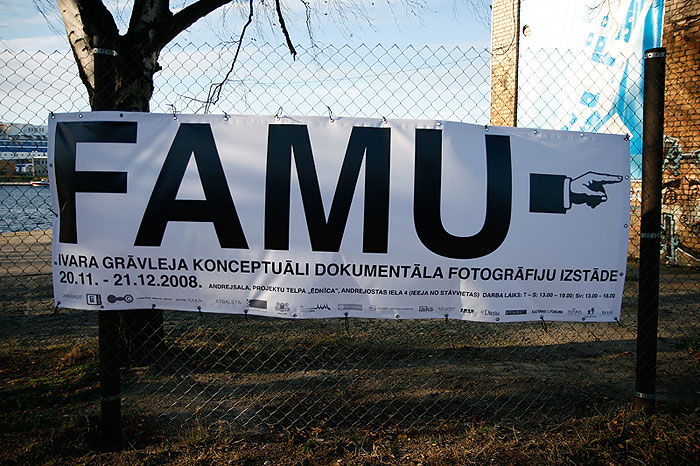
Exhibition's billboard next to the project space "Canteen" in Andrejsala, Riga.
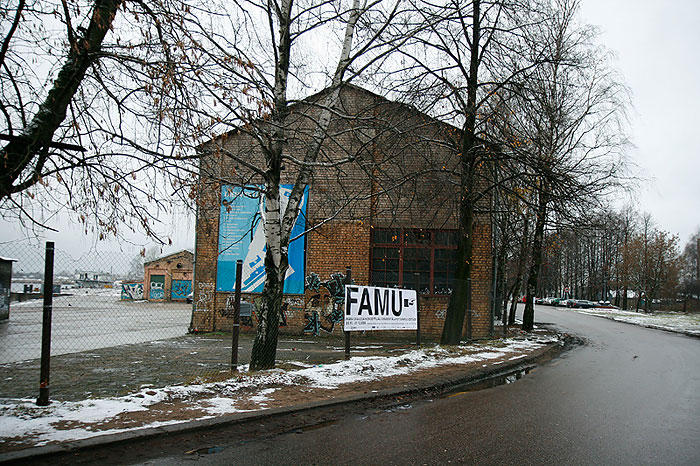
View of Andrejsala - former harbour land.
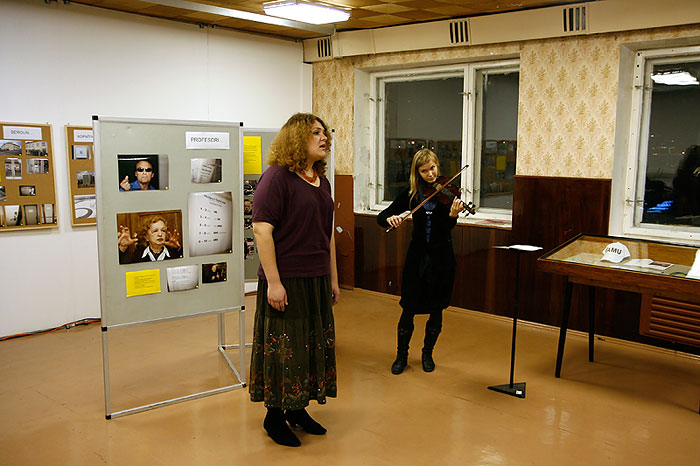 Exhibition opening - one girl was singing another one playing violin.
Exhibition opening - one girl was singing another one playing violin.
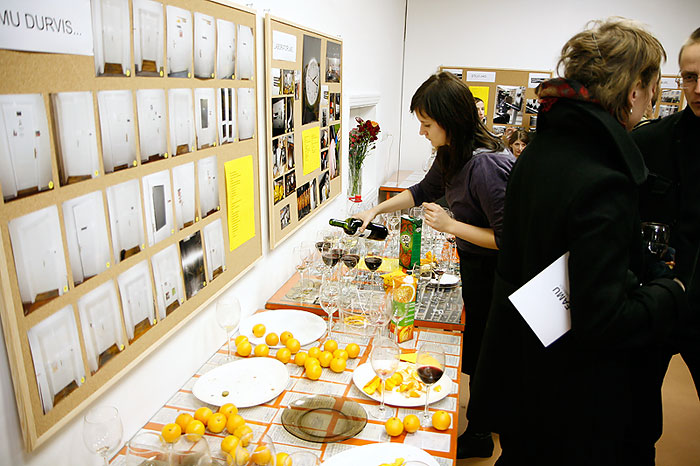
Food and drinks for exhibiton visitors.
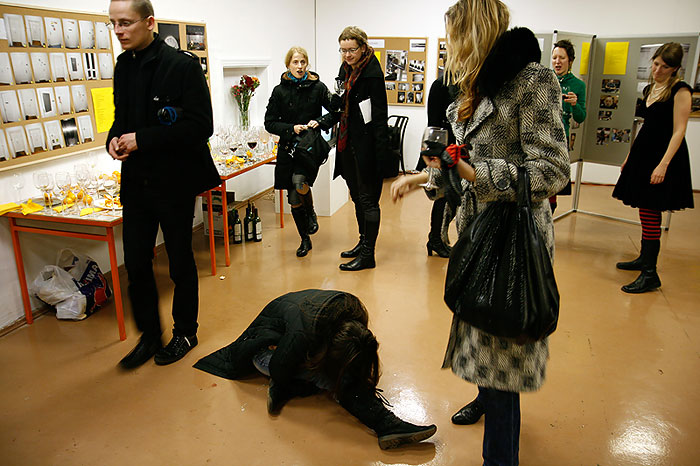
Drugged girl at the exhibition opening.
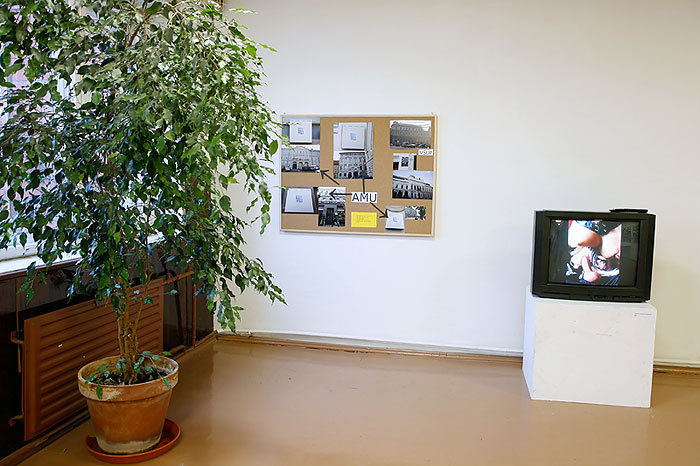
View of exhibition. The board about art academies in Prague and "New wave in photography" slide show on TV.
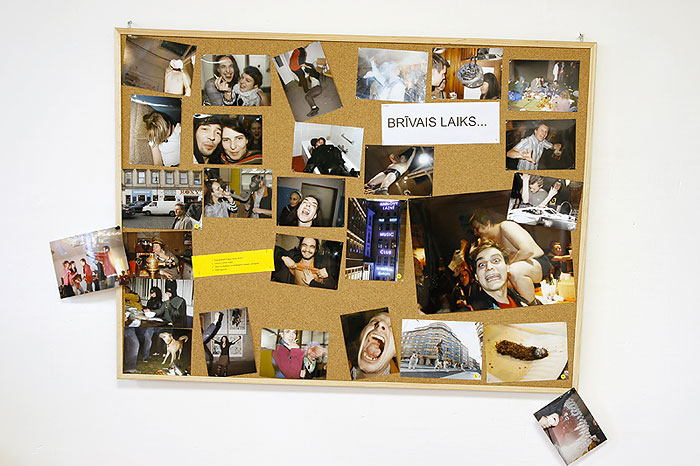
The board about FAMU students having spare time.
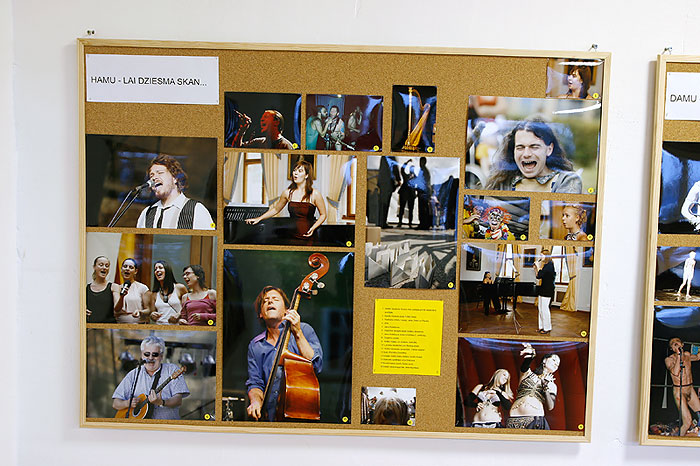
The board about the Music Faculty - HAMU.
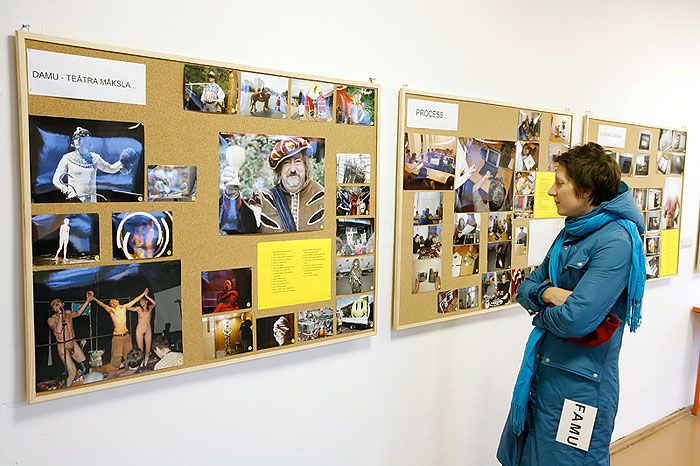
From the left side: board about the Theater Faculty - DAMU and next board about studying process in FAMU.
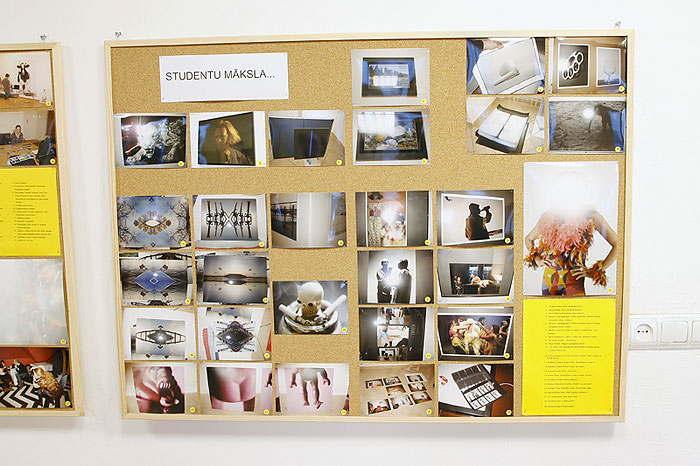
The board about FAMU student's art.
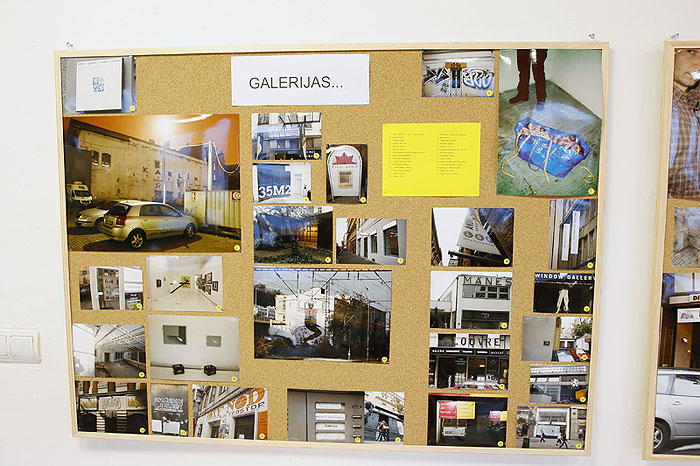
Galleries in Prague.
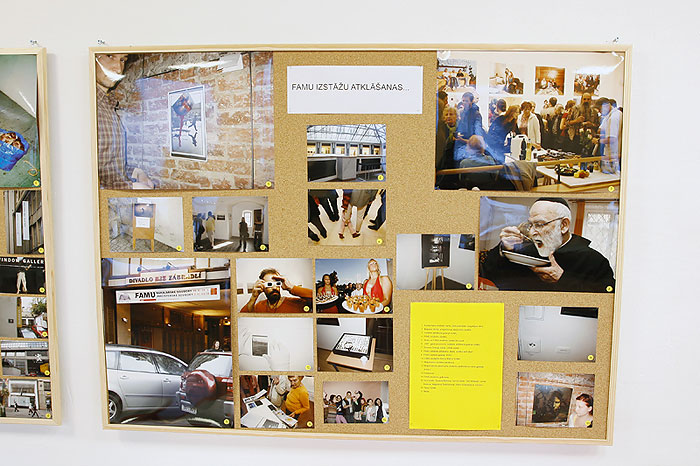
FAMU exhibition openings.
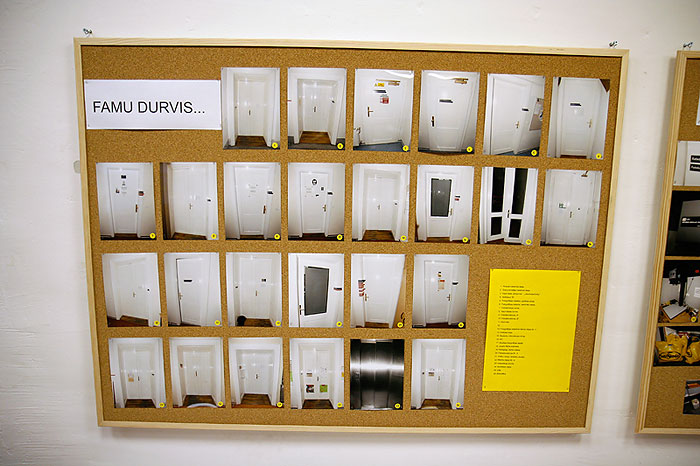
Doors in FAMU.
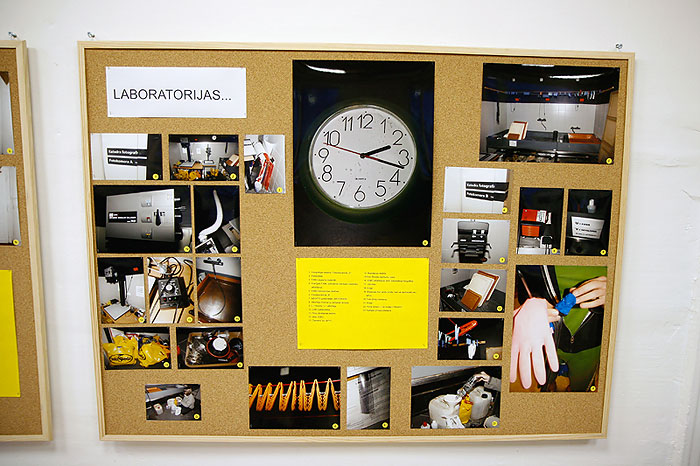
Darkrooms at FAMU.
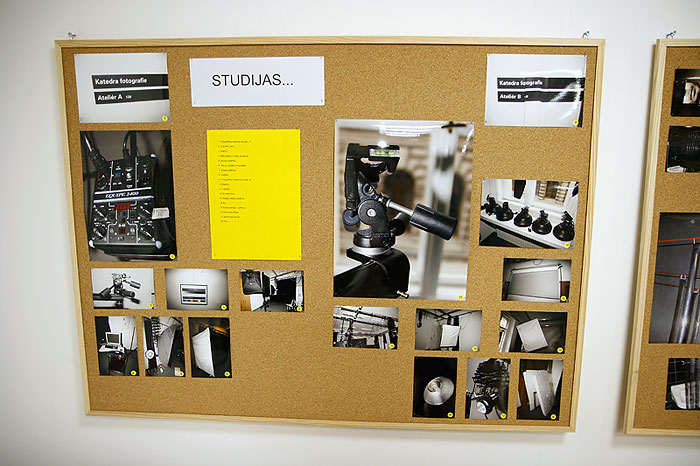
Studios.
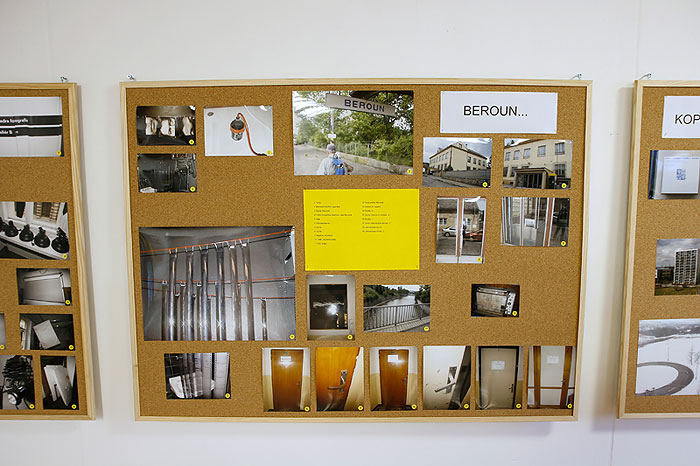
Beroun(30km from Prague) - two FAMU laboratories and studios are located there.
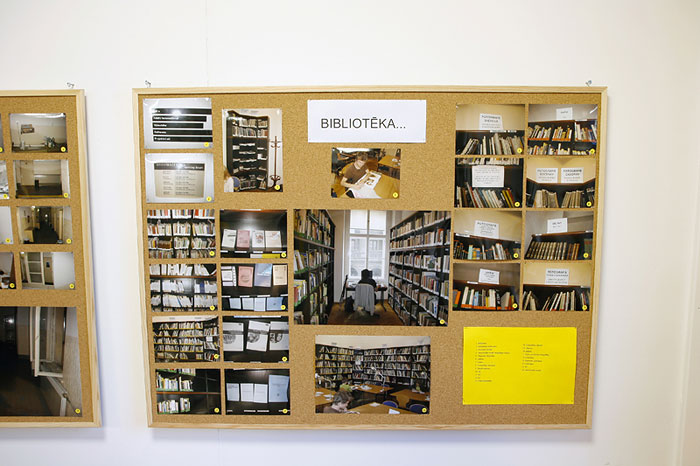
Library.
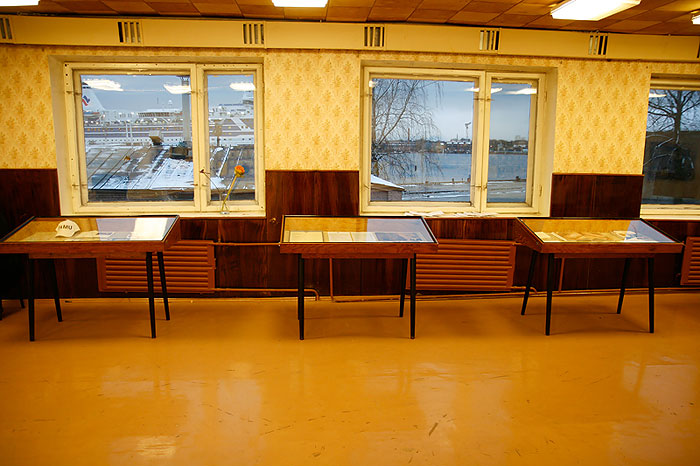
View of vitrines. This part of exposition was devoted to myself.
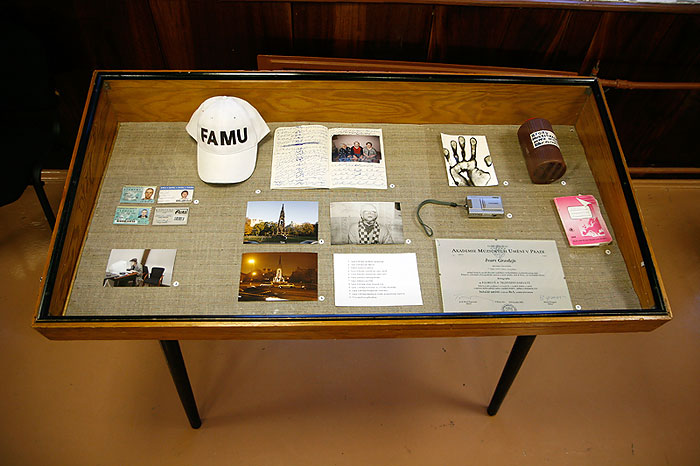 .In the vitrine - my FAMU hat, my student cards, photographs showing me at work, the place for inspiration, me in childhood, etc.
.In the vitrine - my FAMU hat, my student cards, photographs showing me at work, the place for inspiration, me in childhood, etc.
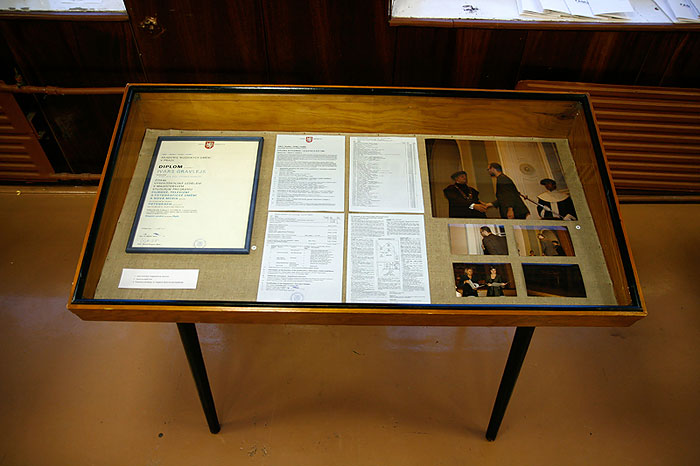 My MA diploma and photographs from the graduation ceremony.
My MA diploma and photographs from the graduation ceremony.
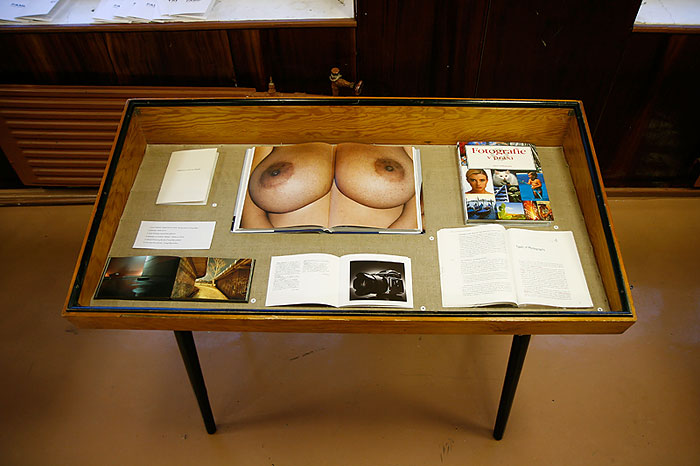 The most influential books for me.
The most influential books for me.
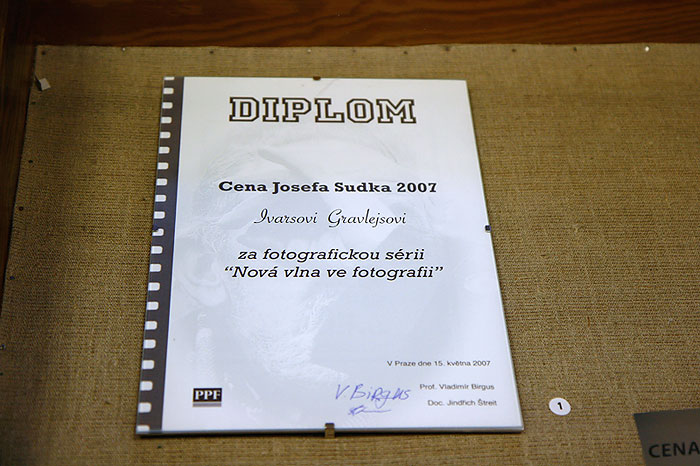 Jozef Sudek's Prize 2007, I received for the series "New wave in photography".
Jozef Sudek's Prize 2007, I received for the series "New wave in photography".
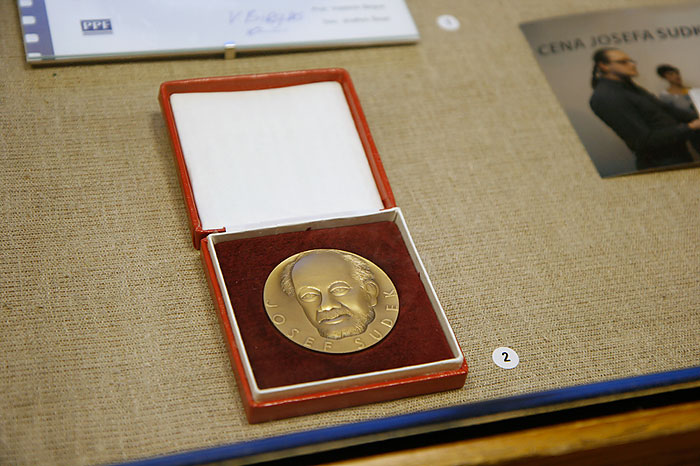 Jozef Sudek's Prize.
Jozef Sudek's Prize.
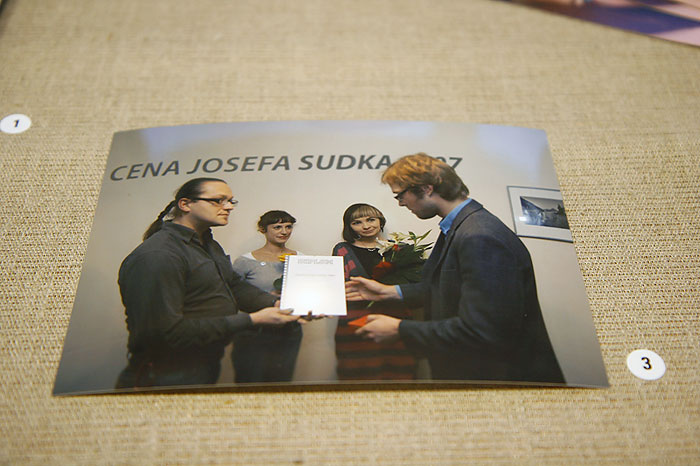 Jozef Sudek's Prize 2007 ceremony.
Jozef Sudek's Prize 2007 ceremony.
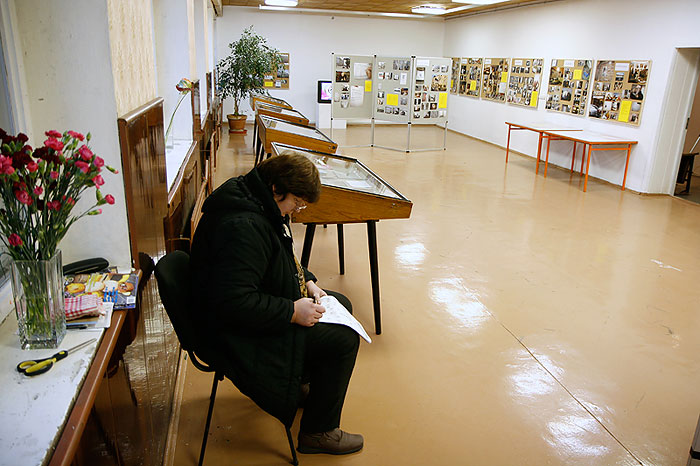
View of exhibition with the exhibition guard.
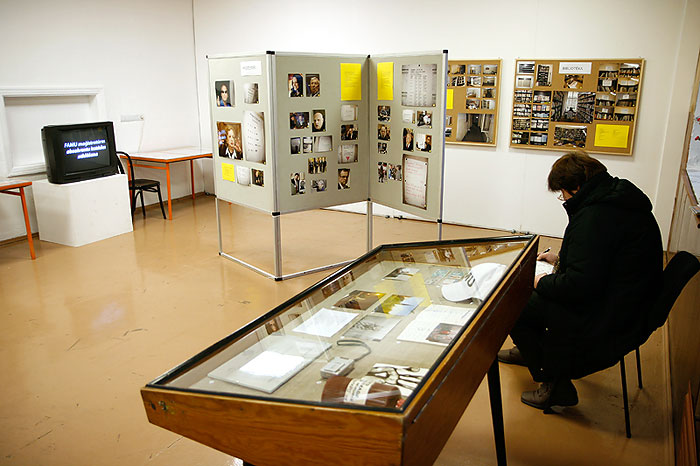
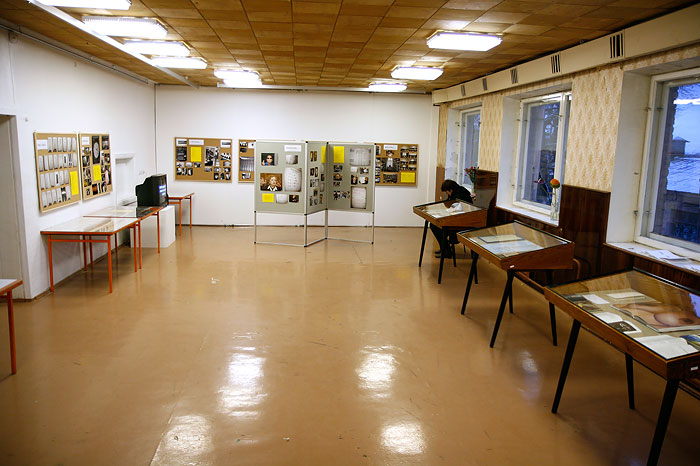
The exhibition is about FAMU - Academy of Performing Arts in Prague where I studied for 5 years. The form of the installation was chosen to create an impression of being "a local exhibition" "for the common man". Logically placed boards with images and descriptions with the purpose to freed of any kind of artistic significance.
The exhibition is pitched at a number of levels. Besides the documentary - basic level, it plays with the possibilities of comprehending FAMU operational structures. On the other hand the exhibition is also my own reflection on reality – a play on fiction and the abstract and direct personal experience. The exhibition is like a polemic about an institution, in which "something is happening", about a space and order, about a location.
FAMU - Academy of Performing Arts in Prague
(text from the exhibiton catalogue)
FAMU or the Film and Television Faculty, is part of AMU1 – Prague Academy of Performing Arts. This learning institution was founded directly after the Second World War on the 27th of October 1945 and includes the Film and Television Faculty (FAMU), the Theatre Faculty (DAMU2) and the Music Faculty (HAMU3).
The Film and Television Faculty (FAMU) was set up in Lažanský palác. The Viennese neo-renaissance style palace built in the 1860s – it was one of the last palace type buildings of that time constructed in Prague. The building is located in Prague’s historic centre on the banks of the Vltava with a view to Prague Castle – the largest ancient era castle in the world.4
At FAMU there are opportunities to study animation, documentary cinema, photography, operator, scenarist and cinema dramaturgy professions, film production, direction, montage, sound and audiovisual studies. It is noteworthy, that FAMU is the only photo school in Europe, where the old and refined black and white photography traditions continue to be honoured. Parallel to the black and white photos, of course, is also the opportunity to master digital photography technologies.
As mentioned in the Photography Department’s study programme, Academy’s goal is not just to teach a trade – how to get a photographic image and to find out about various technical nuances; it motivates students to look at photography as an instrument for expressing the spiritual world. Photography is looked at and analysed as media, as an inseparable component of modern communication systems – with the aim of using it in a creative way in visual language. Lectures and seminars are held in photography and art history, theory, literature, aesthetics and photographic technique. Students in the study process, by consulting with their lecturers, who are representative of many diverse photographic fields, have the opportunity to analyse a whole spectrum of aspects of photography, so that they can critically review and develop photographic thinking. Photography students can in a more intense way find out about the specific features of documentary, studio, landscape, portrait and experimental photography.
When compared to many other European Academies, one couldn’t say that FAMU technical facilities are of the highest quality. The Czech government, similarly to Latvia, does not make any special effort to support the education sphere, and therefore the finances allocated to state colleges are very tight. Students have two photo laboratories for the preparation of black and white photographs, two studios and a computer room with several computers and scanning equipment at their disposal. Two laboratories and studios are located in the town of Beroun (30 km from Prague), where one can get overnight accommodation for a symbolic payment. However, technical equipment is not the most important thing in learning photography, highly professional lecturers are critically important and FAMU certainly has those.
Although students from throughout the world study at FAMU – from America, Canada, Denmark, Korea, Iran, Norway, France, Germany, Israel and also from Latvia – teaching is mainly in the Czech language, but photography and one year of film study can also be done in English. The cost of one academic study year in English is 8700 euro, while study in the Czech language is free. However, learning the Czech language is not that simple. For students who previously haven’t had contact with Slavic languages, the Czech language can appear to be one of the hardest in the world.
Studying at FAMU, one can get a Bachelor of Arts degree (three years of full time study) and subsequently a Masters in Arts degree (two years of full time study). After studies for a Masters, it is possible to continue studies for a Doctorate.
To enrol in the Photography Department’s Bachelor programme, firstly one must get through the portfolio competition (three photograph series, each 8–12 photographs, size – up to 40x50 cm. One of the series must be in traditional black and white technique). After this, the applicants who have made it through the portfolio review, must pass an entry exam in photographic technique, history and general knowledge. To enrol in the Masters, one must get through the portfolio competition and an interview only. Depending on the study programme, entry tests take place in the English or Czech language5. To enter the Czech language study programme is more difficult, as not only young Czech applicants, but also Slovakian ones sign up for it.
Many believe that FAMU is one of the oldest and most prestigious cinema Academies in Europe, as not just a few world famous cinema directors and outstanding writers have graduated from it: for example, Emir Kusturica, Miloš Forman, Václav Havel, Milan Kundera et al.
It is not just the choice of knowledge and skills offered by FAMU that are of great benefit to personality development and growth, but also the opportunity to be in Prague’s cultural historic environment. The Czech capital, Prague (1.2 million residents) is an important Central European economic, cultural and tourism metropolis with superbly preserved historic centre, which is included in the UNESCO World Heritage List. Prague is one of the most beautiful and romantic cities in the world. It charms with its various architectural styles – Gothic, Baroque, Neo-renaissance, Art Nouveau, Cubism, Functionalism et al. If our Riga’s Old Town architecture seems beautiful to visitors from abroad, then Prague exceeds this ten times over.
In Prague there are countless art galleries, among them contemporary art and photo galleries, in which FAMU students also exhibit their works from time to time. Photo exhibitions most often take place at the Josef Sudek Gallery and Langhans Gallery. From 1927 until 1976, famous Czech photographer Josef Sudek (1896–1976) used the studio that belonged to him both as a laboratory, and as a studio, but after the death of the master his house was abandoned and vandalized. In 2000, after reconstruction the Sudek Gallery was opened. Langhans Gallery opened in 2003 after the devastating Prague floods. Currently it is one of the most significant photographic exhibition venues. The largest Prague photo equipment shop is next to Langhans Gallery – “Foto Škoda”, where one can nearly always meet a FAMU student, buying photo film, black and white photo paper Foma, photo chemicals or looking at photo equipment and dreaming about the purchase of the best photo camera.
FAMU students are also obliged to hold exhibitions. Students can exhibit their works in the Velryba Gallery (“the Whale”; is located in the centre of Prague near the Academy) and in the historic Prague Gate Tower Gallery 6, in the town of Beroun. On graduation from the Academy, exhibitions are held in the GAMU Gallery.
One of the most prestigious exhibition halls in Prague is Rudofinum7, where the famous composer Antonin Dvorak’s Music Hall is also located. Many world famous photographic artists have exhibited their works at Rudofinum – Rineke Dijkstra, Gregory Crewdson, Bettina Rheims, Nan Golding, Cindy Sherman et al. A second very important exhibition space in Prague is the National Gallery Veletržní8, in the palace where the largest modern and contemporary art collection in the Czech Republic is located. The Gallery director is the 1960s “Fluxus” group’s participant Milan Knížák – in 2003, together with Italian “Flash Art“ editor and publisher Giancarlo Politi, he laid the foundations for an important art world event – the Prague Biennale.
Prague captivates not just with its artistic environment and study possibilities, but also with its many cafes, bars and music clubs. When relaxing from studies, FAMU students drink cheap Czech beer and absinth in the Prague clubs “Radost”, “Wakata”, “Akropolis” and at “Roxy” as well, where the experimental exhibition space “NoD” and “Entrance” Gallery are located.
The knowledge gained by students coming to Prague will be useful in their everyday work, but Czech beer and nightclubs may still possibly appear in their dreams for a long time.
1 Akademie múzických umění (in Czech), Academy of Performing Arts (in English).
2 Divadlo – ´theatre´ (in Czech).
3 Hudba – ´music´ (in Czech).
4 The castle was built in the year 880, and over the years has been widened and rebuilt a number of times.
5 Detailed information about entry exams can be found in the Academy home page www.famu.cz
6 Pražská brána (Czech lang.).
7 One of the most significant neo-renaissance buildings in Prague. Rudolfinum is located in Jan Palach Square. On the 16th of January 1969, protesting against the Soviet occupation, Czech student Jan Palach self-immolated in Vaclav Square.
8 Veletržní palác (Czech lang.).
Ivars Grāvlejs